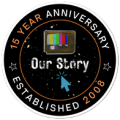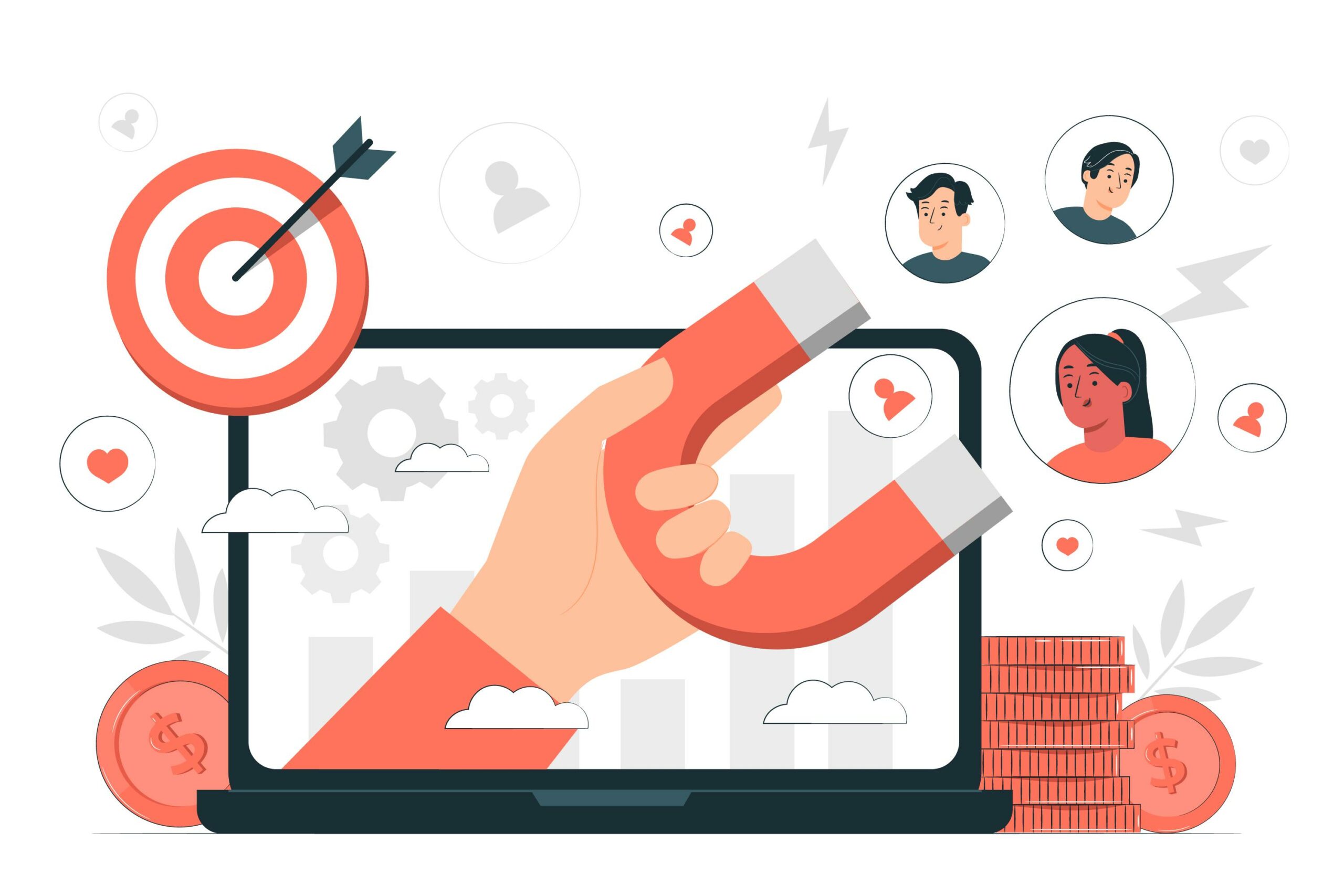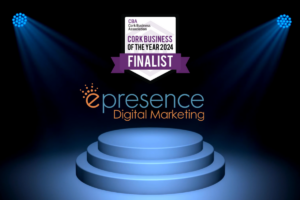My Ten Steps to an Effective Lead Generation System.
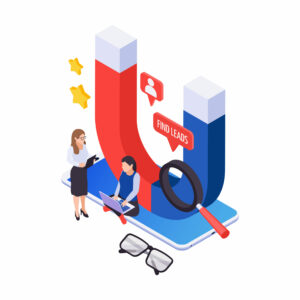
The process of effective Lead Generation can best be described using the Chain analogy, every step in the process is like a link in a chain and as the saying goes; a chain is only as strong as the weakest link.
Any effective lead generation system comprises many moving parts all of which need to be carefully designed and optimised to perform their specific task and contribute to an overall strong efficient system.
The outcome of your Lead Generation campaign is the sum of the results of all of these moving parts. If one part is not functioning it could break the entire system leading to poor results remember, results are very often the only thing Management or a Customer ultimately cares about. Am I seeing an acceptable Return on my Investment?
While every Lead Generation system may have some variations I have broken down my 10 steps to developing a highly effective Lead Generation Machine for your typical small or micro company. Before reading further you may wish to first peruse my Introduction to Lead Generation.
1: Marketing Research
 Like with all aspects of any marketing strategy, it starts with Marketing Research, particularly customer research. It’s imperative to have in-depth knowledge of who your customers are and to develop an accurate Buyers Persona. This is a detailed description of who your ideal customer is. It is based on research and some intelligent guesswork. (See more on Digital Marketing Research.)
Like with all aspects of any marketing strategy, it starts with Marketing Research, particularly customer research. It’s imperative to have in-depth knowledge of who your customers are and to develop an accurate Buyers Persona. This is a detailed description of who your ideal customer is. It is based on research and some intelligent guesswork. (See more on Digital Marketing Research.)
This will help in many of the following steps in your Effective Lead Generation strategy, particularly Targeting and Ad Creative-Copy, if you don’t know who you are trying to reach you won’t be able to target your message correctly. This will negatively impact the effectiveness of every other step after this.
You don’t want to be wasting your precious Ads Spend Budget on the wrong target market, you need to squeeze every cent out of your campaign to achieve optimal ROAS – Return on Ad Spend.
Contact Us for your Lead Generation Requirements
2: Attraction – Platforms
If you don’t have the traffic coming to your offer then no amount of Conversion Tactics will help you, you first need to generate traffic. Traffic can be generated by a number of methods:
1: Controlled traffic, this is traffic that we have control over and we can link to a page of our choice. Whenever we have control of the traffic we should send it to a specially designed squeeze page that offers a high conversion rate. Examples of Controlled Traffic are any Paid Adverts we place online such as Google Search Ads or Facebook/Instagram Ads and Owned Media i.e. Social Media posts.
2: Non-Controlled Traffic, this is traffic that we have no control over like the organic traffic on our website, Google decides which page or article to send this traffic to based on the user’s search intent. We attract this sort of traffic through our SEO services and Content Marketing.
How we decide which platforms we are going to advertise on, what content we are going to create and even our SEO efforts are all guided by our initial research and fine-tuned by monitoring results and ongoing optimisation.
3: Conversion Rate Optimisation
Ideally, we would prefer to have all our visitors being directed to highly targeted squeeze pages that are specifically designed to convert visitors into leads, but Google will send our organic traffic to a standard web page of its choosing so we need to ensure that our normal web pages are properly optimised for Conversions.
This is a process known as Conversion Rate Optimisation which is achieved by providing something of value to our website visitors for which they will be prepared to give us their contact details, such as an educational eBook, Whitepaper, free samples or Voucher.
There are a number of factors that can affect Conversion Rate Optimisation, the value or relevance of the Offer, the CTA – Call to Action, wording and aesthetics. It further includes the strategic placing of Social Proof, Reviews, Videos and relevant images throughout the website and even page loading speeds.
There are literally dozens of factors that can affect Conversion Rates. Setting up an effective Lead Generation system requires ongoing testing and optimisation with each little improvement in each step accumulating to create a far more effective outcome.
On average 96% of first-time website visitors will bounce off your site and never return, it’s essential that you have systems in place to capture the contact details of as many of these visitors as possible so you can communicate with them, nurturing them along the Buyers Cycle to becoming a Paying Customer.
4: Lead Generation Targeting
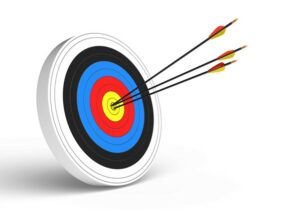 Targeting is the first step in setting up your actual Lead Generation system and for this reason, probably the most important step, getting your targeting wrong will negatively impact the overall system performance. Remember marketing is about getting the Right Message to the Right Person at the Right Time.
Targeting is the first step in setting up your actual Lead Generation system and for this reason, probably the most important step, getting your targeting wrong will negatively impact the overall system performance. Remember marketing is about getting the Right Message to the Right Person at the Right Time.
If you’re targeting the wrong person your Ads won’t resonate no matter how good your Creative, Ad Copy or Offer is, your ads will fall on deaf ears.
How do you know if your targeting is wrong? Generally, there will be a lack of interest in your Ads, your data will show low Click Through Rates CTR, low engagement rates, videos being watched for a few seconds only and extremely low conversions.
If you’ve done your research and you know who your customer is and where they are then your Targeting should be fairly accurate.
Targeting may include: (Platform Dependent)
- Choice of platforms to utilise, what platforms your ideal customers use most.
- Geographical locations, Country, State, Town, where are your customers?
- Gender.
- Age.
- Keywords or phrases used in a search.
- Job Title.
- Interests.
- Education.
- Behaviour.
- Internal lists.
- Re-marketing.
- Lookalike audiences.
As you can see from the above list you are able to target your ideal customer quite accurately, but only if you have in-depth knowledge of whom your customer is. Getting your targeting wrong is something that can be rectified and optimised over time, but it’s best to get it as accurate as possible upfront.
The second aspect of targeting is not just Who your customer is, but at what stage of the buyer’s process.
Are you targeting Awareness for the top of the funnel?
Consideration – Mid Funnel
Conversions at the Decision-making stage.
Each stage requires a different approach in terms of Ad Creative, Ad Copy and Offer. A potential customer at the early stages of the buyer’s process may just be looking for general information about what your product is and its benefits, whereas someone at the later stage of Decision Making may be looking for more detailed specifications and prices. Most platforms allow for the selection of these goals with different targeting options – CPM – CPC or Conversion targeting.
5: Creative
The creative is the image, video or artwork that makes up the Ad. While it should be eye-catching to attract attention on a cluttered platform it must also be relevant to the message, it must tell the visitor something more about the message and Offer.
It’s best to include people in the image or video as people related to people and if possible create your own original creatives, many people can spot Stock Images and it won’t have the same effect.
Contact Us for your Lead Generation Requirements
6: Ad Copy
Ad copy is the text you place in your ads, this is your opportunity to directly address your Buyer’s Persona, then go on to discuss their problems followed by providing details on the solutions you can offer.
Don’t forget that even though you may be a B2B company you are speaking to people and people don’t make decisions or buy products on logic. We are emotional creatures so you have to appeal to your target market’s emotions. Just because you’re a B2B company does not mean you have to be boring.
You have to appeal to the WIIFM, What’s In It For Me, of your client…if they purchase your product or service what will it do for them, will it make them look good at work, will they save time and money? Will it appeal to their ego, I’m not implying that everybody is an egotist, but we all have different levels of ego and we base our decisions on how it will fulfil our specific ego, for example, someone who purchases a Ferrari has a certain ego which driving a Ferrari fulfils, but someone else may be an avid environmentalist wouldn’t be seen dead driving a Ferrari, but will invest in an all-electric small family car. Both are fulfilling their Egos, they just have very different Egos.
It’s important that the Ad copy and Creative present an accurate description of exactly what the Offer is so that when visitors click through to the Landing Page they know exactly what to expect. If the Ads and the Offers don’t match it will confuse your visitors and reduce your successful conversion rate.
7: Landing Page (Squeeze Page.) For Lead Generation
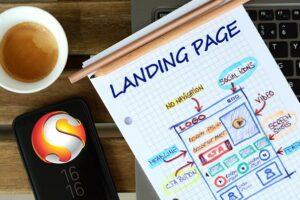 This is the step many marketers struggle with, why spend so much time, money and effort creating a professional website and then send our hard-earned Controlled Traffic, which we pay so much money for, to separate Landing Pages and not our website?
This is the step many marketers struggle with, why spend so much time, money and effort creating a professional website and then send our hard-earned Controlled Traffic, which we pay so much money for, to separate Landing Pages and not our website?
(Specific product pages on an e-commerce website may be an exception to this rule when linking product-specific adverts such as Google Products Ads.)
Most website pages are informative in nature and not designed with Lead Generation – Conversions in mind, the average website page will have a low conversion rate.
Landing or Squeeze pages are specifically designed with Conversion in mind. A landing page is all about the specific Offer and nothing else, all other distractions have been removed. The visitor can only do one of two things either accept the offer and provide his details or leave the page.
The only content on a Landing page should be a Relevant Heading about the Offer, a short compelling description again confirming what the Offer is and a form that the visitor has to fill in to gain access to the Offer. A long-form landing page may be useful for Direct Marketing Campaigns, but we are concentrating on B2B Lead Generation.
It’s imperative that the form should ask for the minimum amount of information required in line with the value of the offer, for a fairly simple whitepaper an email address may suffice, for something of greater value you may ask for additional information, but make it as easy as possible for the visitor to Subscribe to your Offer.
An absolute superstar quality Landing Page could convert as many as 25% of its visitors into leads with an average figure of more like 5%. If your ads are attracting a lot of attention and getting good Click Through Rates, but you are seeing really low conversion rates then it could be that the message you are sending out does not match the offer being presented on the Landing Page causing confusion.
The landing page may require some further optimisation – redesign. It may be that the form is too long, or you are asking for more information than the visitor is willing to give. It could even be the layout of the page, your choice of image or the description is not creating sufficient desire. Your CTA’s could be wrong. You should always be running separate Ad Groups within a Campaign where you are constantly testing one set of subtly different Ads against the other and improving on the weaker-performing Ads each time.
8: The Offer
The “Offer” is something of value that your customers will want and will be willing to give their contact details to obtain.
Your initial Offer may be something fairly basic and free like an educational Whitepaper or Ebook that will assist your potential customer to overcome some problem or learn about your products or services. This could be aimed at the initial Awareness stage when the customer is just starting to look into available options.
When you want to move your lead along the buyer’s cycle you could offer them a Free Sample of your product or a voucher, this is an especially powerful tool for SaaS companies who Offer a free watered-down version of their software, or free limited-time access. This gets the lead accustomed to using their product and makes it easier to upgrade them to the Paid Version at a later date.
Other B2B type companies could offer free online video training during which they go into much more detail about the benefits of their product or service. Hubspot does an excellent job of offering quality content in the form of training and certification to marketers setting themselves up as Thought Leaders in their industry and gaining their customer’s loyalty.
Each offer along the pipeline is of greater value requiring more information from the lead and should be designed to move the lead along the buyer’s journey to becoming a paying client.
Again if you find that your Ads are generating great interest and you’re getting high Click Through Rates but poor Conversions it could be that your offer is of insufficient value or not relevant to your target market. Experiment with different Offers.
9: Email List & Pipelines in Lead Generation
When it comes to nurturing your leads through the pipeline to becoming a paying client you will require some form of Pipeline and Email sequence automation software. The nature of the email platform will depend on your specific requirements. While a larger company may require high levels of automation, segmentation, and tagging with numerous pipelines a smaller company may have just one pipeline with 2 or 3 offers each with a handful of basic triggered emails.
A small company may be able to make do with Mailchimp which now offers Email, Landing Page and Automation features. Bigger companies may require something like Marketo or Hubspot.
No matter what size your company is we all have to abide by the GDPR regulations and obtain definite permission to send commercial emails and provide the ability for recipients to Unsubscribe. For this reason, I wouldn’t recommend sending out emails manually but rather using a professional email platform that provides these features.
A pipeline works by setting up a sequence of Offers each offer providing something of greater value and requiring more and more commitment from your Leads each time moving them closer to becoming a paying customer. Each Offer is connected by a series of automatically triggered emails that have been specially designed to draw the Lead from one Offer to the next. Depending on what action the Lead takes they may be further nurtured as an MQL (Marketing Qualified Lead) or passed on to Sales as an SQL (Sales Qualified Lead) to be followed up on.
The level of automation within a pipeline can get quite complicated with emails being triggered by a series of actions and/or in-actions taken by the Lead within the pipeline, for example, a Lead opens an email, clicks on the link within the email, but did not accept the Offer on the Landing Page they were taken to. This series of events could trigger another email that is sent out 24 hours later reminding them of this Offer with another Link to that Landing Page, this time around the Lead accepts the Offer and is then moved to the next stage of the Pipeline and receives yet another Email informing them of the next Offer.
The Emails themselves need to be carefully written for each step in each sequence and as you will probably have the Leads name it’s best to personalise the emails. It’s also advisable to make the emails quite simple text only for better delivery rates. Most email servers block images, and fancy HTML emails are also handled differently by the various email servers and may look different in your customer’s email from what you intended.
Be careful of your subject lines, and avoid using spammy headlines that will result in your emails being blocked or going to spam folders.
As long as you do everything legally and properly email marketing remains one of the most effective means of communicating with your prospective and existing customers.
10: On-going Optimisation of the Lead Generation System
 A full Lead Generation system comprises about a dozen different moving parts or components, each step building on the step before it, a typical system will comprise the following:
A full Lead Generation system comprises about a dozen different moving parts or components, each step building on the step before it, a typical system will comprise the following:
- Research. – Know who your customer is.
- Choice of Platforms or methods of Attraction, i.e. Facebook, LinkedIn and SEO – Content Marketing.
- CRO of website.
- Targeting.
- Ad Type. Text, Image, Video etc.
- Bid Type. Awareness, Consideration or Conversion.
- Creative. The ad Image or video.
- Ad Copy. The Ad text.
- Landing Page. This is where controlled traffic is sent.
- Form. The method through which you collect Leads.
- Offer. This is the Bait or Magnet.
- Emails – Pipeline.
The overall output of the system is the product of the effectiveness of each moving part, if one part is broken, the whole chain is broken. You could have the best Ads in the world targeting your exact Buyers Persona, but if your Landing Page is poor you will have low conversions, likewise, you may have incredible Conversion Rates, but your targeting and Ads are poor resulting in very low traffic.
It’s imperative that you set up basic A/B testing for each step within the system and compare the effects of these differences on the results. Let these tests run long enough to collect sufficient data for accuracy. When you are sure that a trend has become evident then make improvements to the weaker performing component and re-run the tests, don’t forget to keep records of the results and changes. Keep repeating these tests and improvements on an ongoing basis.
Small improvements in each step are compound in nature and will result in large improvements in the overall system, improving the effectiveness of each of the 12 steps above by just 3% will result in an overall improvement of almost 43% in the system, a 5% improvement in each step will result in an overall 80% improvement. I think you get the idea, it’s important to keep optimising the system.
KPIs to track in Lead Generation could include:
As a marketer, you will be concerned with performance KPIs required to enable optimisation whereas Management may be more concerned with Cost KPIs. Ultimately it’s about Return on Investment.
It is important to track individual KPIs that can be further analysed in segments or groups to determine the overall effectiveness of campaigns or segments within a campaign.
- Impressions. How many times an Ad has appeared?
- CPM. Cost per 1000 possible Views.
- Organic Traffic. Still considered by most marketers as the ultimate traffic.
- Quality Scores. Quality scores may affect where, when and how often an Ad is shown, this can also affect the cost of an Ad.
- Clicks. How many people clicked on an Ad?
- CTR. What percentage of Ad impressions received clicks?
- CPC. Cost per click.
- Engagement. Where your ads engaged with, Shares, Comments and Likes etc. If a video Ad, was it watched and how long for?
- Conversions. How many visitors provided their details and became Leads?
- CPL. Cost per Lead.
- Purchases. How many actual purchases were made, and the average value?
- CPA. Cost per Acquisition is what it costs to obtain a paying customer.
- ROAS. Return on Ad Spend, a percentage of Ads Spend/CPA.
- ROI. Return on investment is the overall campaign providing a sufficient return.
This is by no means an exhaustive list of KPIs to track, it’s advisable to track enough data to provide you with an accurate picture of how well your system is working overall and to be able to pinpoint weaknesses and rectify them. The bigger the system, the more moving parts you will have and the more you will need to track.
Be careful not to fall into the trap of looking at numbers in isolation, you might think that getting 20 leads a month is fantastic, but these 20 leads may be poor quality leading to low sales, or you might be getting 2000 visitors to your landing page meaning you are getting very poor Conversions.
Use common sense when dealing with data and know what you are looking for and remember that marketing is not about numbers, it’s about people, people helping to solve other people’s problems. Numbers may only tell a part of the story.
Contact Us for your Lead Generation Requirements

